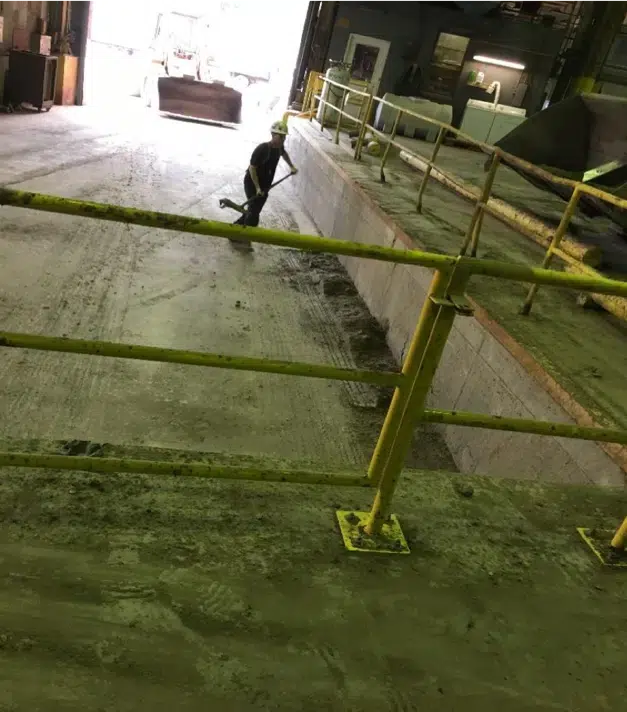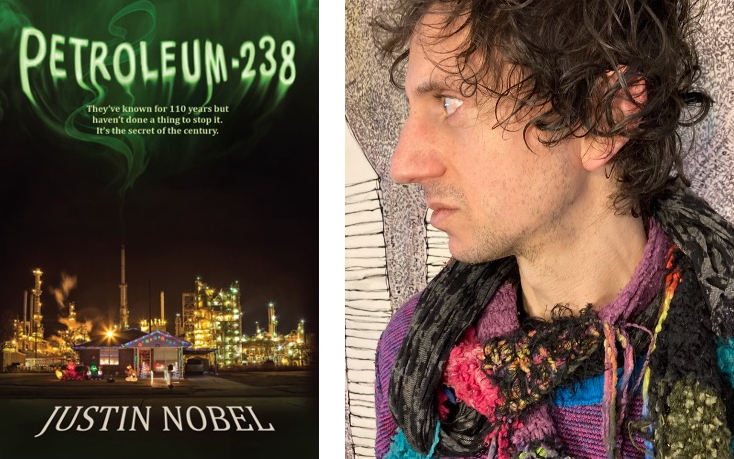In Paris, France, there are fine cafés and famous landmarks. But what nobody really knows is at the other end of a building known as Le V, on the northeast side of the city, is a portal that leads to a secret pile of fracking waste from the woods of West Virginia. A lot more comes to the surface at an oil and gas well than just the oil and gas, including billions of pounds of waste every day across the U.S., much of it toxic and radioactive. My journey into this topic started when an Ohio community organizer told me someone made a liquid deicer out of radioactive oilfield waste for home driveways and patios, which was supposedly “Safe for Pets” and had been selling at Lowe’s. As you will see, this indeed was the case. Unraveling how that came to be turned into a 20-month Rolling Stone magazine investigation, which won an award with the National Association of Science Writers, and an entire set of shocking DeSmog investigations. And, eventually, it all became this book, Petroleum 238: Big Oil’s Dangerous Secret and the Grassroots Fight to Stop It — available here on Amazon, here on Bookshop, or it can be ordered at any local bookstore.
It almost doesn’t seem real, and you might deny it. But really all that has happened here is a powerful industry has spread harms across the land, its people, and more so than anyone, their very own workers, and did what they could to make sure no one ever put all the pieces together. And no one ever has — until now. Many people tell me there is nothing to see here, the levels aren’t that bad. But unfortunately this is the same thing the oil and gas industry’s shadow network of radioactive waste workers have often been told. So they work on, shoveling and scooping waste, mixing it with lime and coal ash and ground up corncobs in an attempt to try and lower the radioactivity levels, without appropriate protection, sometimes in just T-shirts, eating lunch and smoking cigarettes and occasionally having barbecue cookouts in this absurdly contaminated workspace. Sludge splattered all over their bodies, liquid waste splashing across their faces and into their eyes and mouths, inhaling radioactive dust, waste eating away their boots, soaking their socks, encrusting their clothes, which will often be brought home and washed in the family washing machine, or a local hotel, further spreading contamination. Oilfield waste has been spilled, spread, injected, dumped, and freely emitted across this nation. And contamination has been discharged—sometimes illegally, often legally—into the same rivers America’s towns and cities draw their drinking water from.
More Radioactivity Than at Chernobyl
Just the other month I visited an abandoned fracking waste treatment plant on a large U.S. river where unknowing local kids had been partying. It was littered with beer cans and condoms and parts of it were more deeply contaminated with radioactivity than most of the Chernobyl Exclusion Zone. I was there with a former Department of Energy scientist and his Geiger counter issued a terrifying alarm — at around 2 milliroentgens per hour. He had samples tested at a radiological analysis lab and discovered the radioactive element radium to be 5,000 times general background levels.
It’s all right there in the industry’s own research and reports. And this is the beauty of science, an incredible record of our world and its ways laid out across time, and like a sacred language, it moves through time, collecting new bits and building. One can go back to 1904, when a 25-year-old Canadian graduate student named Eli described “experiments with a highly radioactive gas obtained from crude petroleum.” Or 1982, when a report of the American Petroleum Institute’s Committee for Environmental Biology and Community Health stated: “Almost all materials of interest and use to the petroleum industry contain measurable quantities of radionuclides that reside finally in process equipment, product streams, or waste.” Radium, they warned, was “a potent source of radiation exposure, both internal and external,” while the radioactive gas radon and its polonium daughters “deliver significant population and occupational exposures.” Radon is America’s second leading cause of lung cancer deaths and naturally contaminates natural gas. Which means it is being emitted out of home stoves in parts of the country at levels high enough to generate public health risks, and over time, cancer and deaths. The 1982 American Petroleum Institute report concluded: “regulation of radionuclides could impose a severe burden on API member companies.”
And they have triumphed, as the radioactivity brought to the surface in oil and gas development was never federally regulated and remains unregulated. The industry was granted a federal exemption in 1980 that legally defined their waste as nonhazardous, despite containing toxic chemicals, carcinogens, heavy metals and all the radioactivity. As the nuclear forensics scientist Marco Kaltofen has told me: “With fossil fuels, essentially what you are doing is taking an underground radioactive reservoir and bringing it up to the surface where it can interact with people and the environment.” And he said this, too: “Radiation is complex and difficult to understand but it leaves hundreds of clues.”

Known to precious few people, the mineral scale and sludge that accumulates in our 321,000-plus miles of natural gas gathering and transmission pipelines can be filled with stunning levels of the same isotope of polonium that assassins used in 2006 to murder former Russian security officer Alexander Litvinenko, by placing an amount smaller than a grain of sand in his tea at a London hotel bar. Natural gas pipeline sludge, reads a 1993 article on oilfield radioactivity, published in the Society of Petroleum Engineers’ Journal of Petroleum Technology, can become so radioactive it requires “the same handling as low-level radioactive wastes.” And yet, by U.S. law, it is still considered nonhazardous. Unlike the cosmic radiation an airline passenger is exposed to, or the X-rays of a CT scan, moving around radioactive oilfield sludge or scale invariably creates dust and particles, which an unprotected worker may easily inhale or ingest, thereby bringing radioactive elements inside their body where they can decay and fire off radiation in the intimate and vulnerable space of the lungs, guts, bones, or blood.
Then the real revelation, the oil and gas workers that politicians regularly celebrate are getting their bodies and clothing covered in waste that can be toxic and radioactive but legally defined as nonhazardous. I ask these politicians now, as workers regularly ask me, is it still nonhazardous as they are breathing it in? Or tracking it through the door of their home and into their family? This same 1980 exemption allows radioactive oilfield waste to be transported from foreign countries seamlessly across America’s borders and deposited in the desert of West Texas. I have been there.
An ‘Astonishing Scientific Story’
This is a story about worker justice. This is a story about environmental justice. This is an astonishing scientific story. We live on a radioactive planet, and oil and gas happens to bring up some of Earth’s most interesting, and notorious, radioactive elements. They can be concentrated in the formation below, and further concentrated by the industry’s processes at the surface. From day one, which in the United States was 1859, the U.S. oil and gas industry has had no good idea what to do with this waste. And so began an extraordinary campaign to get rid of it all. Modern fracking has only worsened the problem, by tapping into even more radioactive formations, bringing drilling closer to communities, and vastly increasing the amount of waste.
In a 1979 Congressional hearing, Texas oilfield regulators, using figures calculated by the American Petroleum Institute, provided a clue as to just what more rigorous regulations, ones that actually labeled the oilfield’s most dangerous waste as hazardous, might mean for the industry: a “one time cost of over $34 billion to bring existing operations into compliance” and “as high as $10.8 billion per year.” That number would be drastically higher today, but no one has done the math, in part because the full picture of costs and harms has remained unknown.
Whether it is a multinational company out of Paris, or the guy in rural Pennsylvania who stashed fracking waste beneath a courthouse, readers will be surprised at how deep this rabbit hole goes, and how close it may touch to the thing they call home, or the things they cherish. It is out of this unknowing, and deception, that this book can exist. My challenge to you is read it through to the end, and realize, this is not a book about despair — to say it, is to know it, is to change it.
Subscribe to our newsletter
Stay up to date with DeSmog news and alerts







